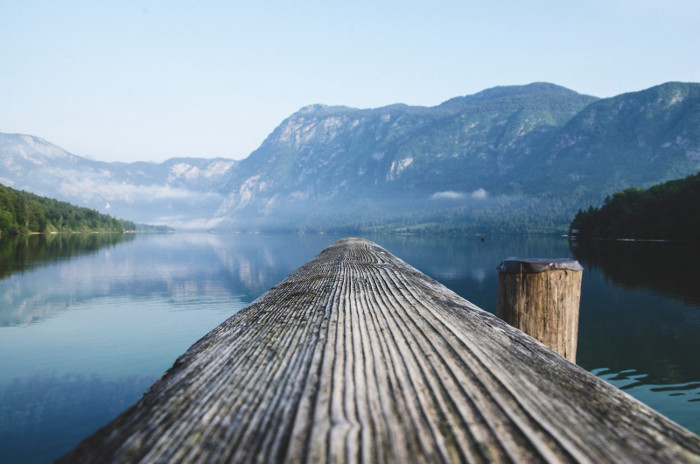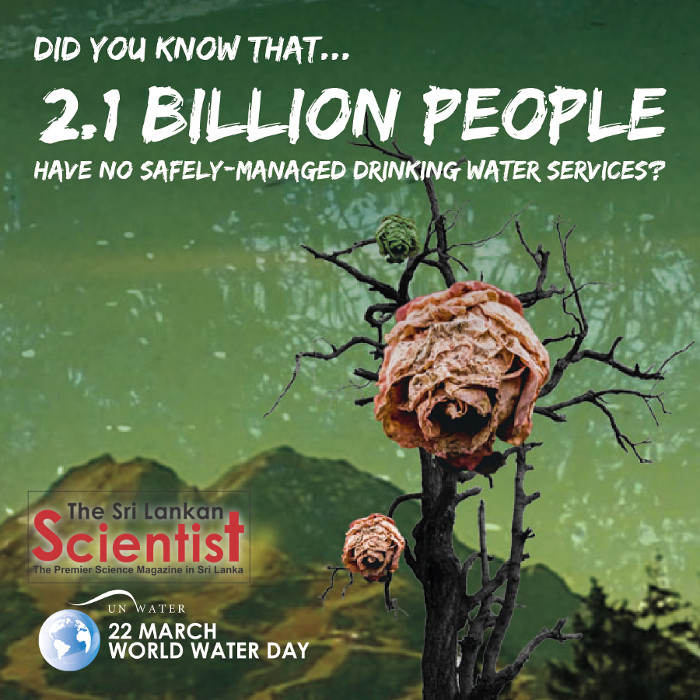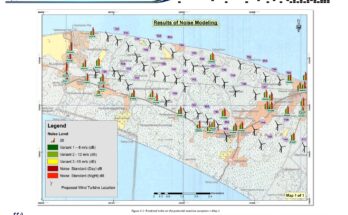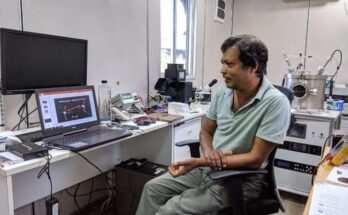World Water Day, on 22 March every year, is about focusing attention on the importance of water. This year’s theme, ‘Nature for Water’, explores nature-based solutions (NBS) to the water challenges we face in the 21st century.
The campaign is called ‘The answer is in nature’ and raises awareness of NBS. The central message is that NBS, such as planting trees to replenish forests, reconnecting rivers to floodplains, and restoring wetlands, is a sustainable and cost-effective way to help rebalance the water cycle, mitigate the effects of climate change and improve human health and livelihoods.

By using NBS to help meet the water needs of a growing population, we will contribute to the creation of a circular economy, at the same time as helping to protect the natural environment and reduce pollution – both key targets in Sustainable Development Goal 6, which commits the world to ensuring availability and sustainable management of water and sanitation for all by 2030.
HEADLINE FACTS
Water demand:
• 2.1 billion people lack access to safely managed drinking water services.

• By 2050, the world’s population will have grown by an estimated 2 billion people and global water demand could be up to 30% higher than today.
• Agriculture currently accounts for 70% of global water withdrawals, mostly for irrigation – a figure which rises in areas of high water stress and population density. Industry takes 20% of the total, dominated by energy and manufacturing.
The remaining 10% goes to domestic use – the proportion used for drinking water is much less than 1%.
Water availability:
• Today, around 1.9 billion people live in potentially severely water-scarce areas. By 2050, this could increase to
around 3 billion people.
Water quality:
• An estimated 1.8 billion people use an unimproved source of drinking water with no protection against contamination from human faeces.
• Globally, over 80% of the wastewater generated by society flows back into the environment without being treated or reused.
Climate and environment:
• The number of people at risk from floods is projected to rise from 1.2 billion today to around 1.6 billion in
2050 – nearly 20% of the world’s population.
• Today, around 1.8 billion people are affected by land degradation and desertification. At least 65% of forested
land is in a degraded state.
• An estimated 64-71% of natural wetlands have been lost since 1900 as a result of human activity.
• Soil erosion from croplands carries away 25 to 40 billion tonnes of topsoil every year, significantly reducing
crop yields and the soil’s ability to regulate water, carbon and nutrients. The runoff, containing large amounts of nitrogen and phosphorous, is also a major contributor to water pollution.
WHAT ARE NATURE-BASED SOLUTIONS (NBS)?
Restoring forests, grasslands and natural wetlands, reconnecting rivers to floodplains, creating buffers of vegetation along water courses – these are all examples of NBS that help the management of water availability and quality.
Most NBS, including in urban landscapes, essentially involve the management of vegetation, soils and/or wetlands,
including rivers and lakes.
NBS are not a panacea to the critical water-related challenges we face as the global population grows, but they can provide innovative and cost-effective options for supplementing insufficient or ageing water infrastructure. For example:
• Water availability and supply: Water storage via natural wetlands, soil moisture and/or groundwater recharging can be more sustainable and cost-effective than grey infrastructure, such as dams.
• Water quality: Pollution from agriculture can be drastically reduced by NBS such as conservation agriculture, which protects soil from erosion, or riparian buffers, strips of land along water courses planted with native trees and shrubs.
• Risk management: The effects of climate change, such as frequent extreme flooding, can be mitigated by a range
of NBS, such as riparian buffers or connecting rivers to floodplains.
The application of certain NBS creates what is known as ‘green infrastructure’: natural or semi-natural systems that give us equivalent or similar benefits to conventional, human-built ‘grey infrastructure’.
NBS often produce benefits beyond water-related services. For example, constructed wetlands used for wastewater
treatment can provide biomass for energy production,improve biodiversity and create recreational spaces and associated employment.
WHAT WOULD GREEN AND GREY INFRASTRUCTURE
IN THE WATER CYCLE LOOK LIKE?
• At the start of the cycle, as water bubbles up from a spring or falls as rain, healthy forests and sustainably-managed fields ensure stable, good quality soil for water to fall onto and flow through.
• Human-built reservoirs and dams store water, which allows irrigation of surrounding land, energy generation, and regulates the river flow.
• Protected wetlands help filter and purify the water and enhance biodiversity, and diverted water can recharge groundwater resources and mitigate flooding downstream.
• Purification and treatment plants make freshwater and wastewater ready for human consumption and pump it into networks of pipes.
• Human-made barriers and deliberate use of natural flood plains can control flooding and mitigate disaster risk as water returns to the start of the cycle.
NATURE-BASED SOLUTIONS AND THE SUSTAINABLE
DEVELOPMENT GOALS
NBS for managing water supply and quality support the achievement of all targets in Goal 6: to ensure availability
and sustainable management of water and sanitation for all.
NBS can also play a role in a range of other Sustainable Development Goals:
• Goal 1: No poverty, Goal 2: Zero hunger, Goal 3: Good health: New jobs are often created by NBS, and improved
health from better quality water means higher productivity.
• Goal 7: Affordable, clean energy, Goal 9: Industry, innovation and infrastructure, Goal 11: Sustainable cities and communities, Goal 12: Responsible consumption and production: NBS require little or no energy and so can reduce reliance on energy-hungry grey systems. They also help provide more sustainable water resources to serve growing settlements.
• Goal 14: Life below water, Goal 15: Life on land: Wetlands can reduce pollution by filtration and increase
Bbodiversity by expanding natural habitats.
EXAMPLES OF NATURE-BASED SOLUTIONS
Sand dams
In arid areas, the riverbeds of seasonal, intermittent rivers and streams often hold shallow groundwater reserves, which are recharged every time the rivers flow. While individuals may dig down to scoop out water for their families, these water resources are rarely ever used on a systematic scale for agriculture and other activities. Sand dams are walls dug into the ground across the river bed. On the Sashane river in Zimbabwe, sand dams have been built and fitted with low-cost, solar-powered pumps. By heightening the dam in stages, sediment builds up behind the dam, increasing the amount of water stored and making it accessible via the pumps.
This supplementary water source extends the cropping season for local farmers and helps produce extra yield, which in turn encourages biodiversity. Community-based monitoring systems help manage the resource and ensure there is enough for domestic as well as commercial uses.
Landscape restoration
Unusually low rainfall in 1985–86, combined with excessive logging, led to the worst droughts in the history of Rajasthan, India. The district of Alwar, one of the poorest in the state, was severely affected.
The groundwater table had receded below critical levels, which led to Government restrictions on any further groundwater extractions.
With the support of local NGOs, communities in the area constructed small-scale water harvesting structures combined with the regeneration of forestsand soils, particularly in upper catchments, to help recharge groundwater resources.
Water supplies were re-established in 1,000 villages across the state; five rivers that used to run dry after the annual monsoon season began flowing again and fisheries in them re-established; groundwater levels rose by an estimated six metres; productive farmland increased from 20% to 80% in the catchment area; crucial forest cover, including in farmlands, which helps to maintain the integrity and water-retaining capacity of the soil, increased by 33%; and the return of wildlife such as antelope and leopard has been observed.
Conservation agriculture
Conservation agriculture is based on three principles:
minimizing soil disturbance; maintaining a continuous soil cover of organic mulch and/or plants; and cultivating
diverse plant species.
Eliminating or minimising tilling or ploughing avoids disturbing and breaking up the topsoil structure, as well as
reduces emissions from farm machinery. This has been found to keep the soil more stable, increase drainage, slow down runoff, and drastically reduce pollution of nearby water sources.
The economic benefits of conservation agriculture have been established in various systems around the world, from smallholder agricultural systems in Latin America and sub-Saharan Africa to large-scale commercial production systems in Brazil and Canada. Currently, about 1.8 million km2 of croplands are under conservation agriculture, representing about 12.5% of global cropland extent, an increase of nearly 70% since 2008.
Sponge cities, China
The China Government has launched the ‘Sponge City’ initiative to improve water availability in urban settlements.
City authorities will use a combination of NBS and grey infrastructure to reduce urban water-logging, improve local ecosystems, and retain urban runoff for eventual reuse.
By 2020, the 16 pilot cities will implement a range of measures, such as green roofs and walls, permeable pavements, and bioswales (constructed filtration channels) to capture water and divert it back into revitalized natural storage for irrigation and cleaning purposes during periods of drought.
The project’s objective is for 70% of rain water to be absorbed and reused through improved water permeation, retention and storage, purification and drainage, as well as water saving and reuse. This goal should be met by 20% of urban areas by the year 2020 and by 80% of urban areas by the year 2030.
WORLD WATER DEVELOPMENT REPORT 2018 AND THE NEED FOR MORE RESEARCH
For in-depth detail on nature-based solutions for water, please see the World Water Development Report
2018 that is released on 22 March 2018. While there is a great deal of exciting progress to report, the publication
acknowledges the need for more research into key areas around the performance, impact and scalability
of NBS, among other issues.





I wonder weather you have heard of bioremediation of contaminated water, using Reeds for the cleaning process
It’s been done successfully in Sudan,Chad,UK,etc
I would very much like to introduce this cost effective process to Sri Lanka – towards conservation of Water
Please revert if interested
Many Thanks